
JOURNAL OF PHOTOCHEMISTRY AND PHOTOBIOLOGY B-BIOLOGY
Scope & Guideline
Advancing Knowledge in Photochemistry and Photobiology
Introduction
Aims and Scopes
- Photodynamic Therapy (PDT) Applications:
The journal extensively publishes research on photodynamic therapy, highlighting its effectiveness in treating various cancers and microbial infections through the use of photosensitizers activated by light. - Mechanisms of Light Interaction with Biological Systems:
A consistent focus is on elucidating the molecular mechanisms by which light influences cellular processes, including apoptosis, oxidative stress response, and gene expression. - Photobiomodulation (PBM):
Research on photobiomodulation techniques is prominent, particularly regarding their therapeutic benefits in wound healing, pain relief, and tissue regeneration. - Environmental and Ecological Impacts of Light:
Studies assessing the ecological effects of light exposure on organisms, including plants and microorganisms, are significant, indicating the journal's commitment to environmental photobiology. - Innovative Light-Based Technologies:
The journal highlights advancements in light-based technologies, including novel materials and methods for therapeutic applications, emphasizing interdisciplinary research.
Trending and Emerging
- Nanotechnology in Phototherapy:
Research integrating nanotechnology with phototherapy is on the rise, showcasing the development of novel nanocarriers and photosensitizers that enhance therapeutic efficacy and specificity. - Antimicrobial Photodynamic Therapy:
The application of photodynamic therapy for combating antimicrobial resistance is increasingly prominent, with studies focusing on the efficacy of light-activated treatments against resistant bacterial strains. - Photosensitizers Derived from Natural Compounds:
There is a growing interest in utilizing naturally occurring compounds as photosensitizers, reflecting a trend towards sustainable and biocompatible therapeutic agents. - Personalized Medicine Approaches:
Emerging research is exploring personalized phototherapy strategies, tailoring treatments based on individual patient characteristics and specific disease profiles. - Impact of Light on Microbiomes:
Studies examining the effects of light on microbial communities, particularly in the context of health and disease, are gaining attention, highlighting the interplay between light exposure and microbiome dynamics.
Declining or Waning
- Traditional Chemical Photoprocesses:
Research centered around conventional chemical reactions that utilize light is becoming less frequent, possibly due to a shift toward more biologically relevant applications of photochemistry. - In Vitro Studies with Limited Biological Context:
There is a noticeable decrease in studies that focus solely on in vitro models without clear implications for in vivo applications or clinical relevance, reflecting a trend toward more translational research. - Basic Photochemical Mechanisms:
While understanding fundamental photochemical processes remains important, there is a declining emphasis on purely theoretical studies without direct biological applications.
Similar Journals

Trauma-England
Championing excellence in critical care and emergency response.Trauma-England is a peer-reviewed academic journal, published by SAGE PUBLICATIONS LTD, that focuses on the critical intersections of trauma care, emergency medicine, and surgical practices. Established in 1999, this journal serves as a vital resource for researchers, practitioners, and students in the fields of Critical Care, Emergency Medicine, and Surgery, providing in-depth analyses and cutting-edge research from the UK and beyond. With a growing reputation, it has been categorized within the Q3 and Q4 quartiles in various medical rankings, highlighting its importance in addressing contemporary challenges in trauma and emergency care. Although it does not currently offer open access options, the journal remains dedicated to fostering academic discussions and developing impactful strategies that can improve patient outcomes and enhance trauma care services. Strategically positioned to influence clinical practices and guidelines, Trauma-England is committed to advancing the field and supporting healthcare professionals in delivering high-quality trauma management.
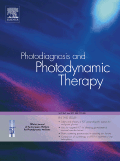
Photodiagnosis and Photodynamic Therapy
Bridging Science and Light for Enhanced Medical SolutionsPhotodiagnosis and Photodynamic Therapy is a leading journal published by Elsevier, specializing in the fields of biophysics, dermatology, oncology, and pharmacology. With an impressive Q2 ranking across multiple categories in the 2023 category quartiles, this journal is pivotal for researchers and practitioners aiming to advance their knowledge and expertise in photodiagnostic and therapeutic techniques. Since its inception in 2004, it has provided a critical platform for peer-reviewed articles exploring the latest advancements and applications in light-based treatments. As of 2024, the journal will be fully Open Access, enhancing its accessibility and reach across the scientific community. Located in Amsterdam, Netherlands, this journal's commitment to fostering innovation and collaboration makes it an essential resource for those interested in the intersection of light-based technologies and medicine. With its high visibility in key indexed databases like Scopus, researchers can trust that their contributions will be well-regarded and widely disseminated.

Chemical Science
Catalyzing Breakthroughs in Chemical ScienceChemical Science, published by the esteemed Royal Society of Chemistry, is a leading open-access journal that has been a pivotal platform for disseminating high-quality research in the field of chemistry since its inception in 2010. With an impressive Impact Factor and ranked in the Q1 category of Chemistry (miscellaneous) and holding a distinguished rank of #34 out of 408 in General Chemistry according to Scopus, it is widely recognized for its rigorous peer-review process and innovative contributions to the discipline. The journal embraces a global readership by providing an open-access model since 2015, thereby making vital scientific advancements accessible to researchers, professionals, and students alike. Covering various branches of chemistry, Chemical Science aims to publish original research articles, reviews, and communications that advance our understanding and application of chemical sciences. With its commitment to excellence and its continued relevance in a rapidly evolving field, Chemical Science is an indispensable resource for anyone engaged in chemistry research and education.

TISSUE & CELL
Exploring the Frontiers of Cell Biology and MedicineTISSUE & CELL is a prominent academic journal, published by CHURCHILL LIVINGSTONE, that has been at the forefront of research in the fields of cell biology, developmental biology, and miscellaneous areas of medicine since its inception in 1969. With a strong focus on high-quality research, TISSUE & CELL has established itself within the academic community, holding a Q3 ranking in both Cell Biology and Developmental Biology, and a Q2 ranking in Medicine as of 2023. The journal aims to disseminate significant findings that contribute to the understanding of tissue structure and function, helping to bridge the gap between basic biological research and clinical applications. While it operates on a subscription basis and does not currently offer Open Access options, the journal remains a vital resource for researchers, professionals, and students interested in cutting-edge developments in the biological sciences. The journal's address is located in the scenic city of Edinburgh, further establishing its academic heritage in the United Kingdom.
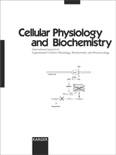
CELLULAR PHYSIOLOGY AND BIOCHEMISTRY
Advancing Knowledge in Cellular ScienceCellular Physiology and Biochemistry is a premier Open Access journal published by the prestigious Cell Physiol Biochem Press GmbH & Co, dedicated to advancing research in the fields of physiology, biochemistry, and molecular biology. Since its inception in 1987 and transitioning to an Open Access model in 2013, the journal has established itself as a vital resource for the dissemination of high-quality research and reviews, showcasing innovative methodologies and groundbreaking findings in cellular processes. With an impressive ranking in the 2023 Scopus category as Q2 in Physiology and a robust percentile of 61, Cellular Physiology and Biochemistry is committed to fostering academic dialogue among researchers, professionals, and students alike. This journal not only provides unrestricted access to its articles, but also promotes the global sharing of knowledge, which is essential for the advancement of our understanding in these vital scientific areas. The journal's editorial team is dedicated to ensuring the highest standards of academic rigor and relevance, making it an indispensable addition to the libraries of those engaged in the life sciences.
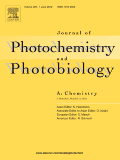
JOURNAL OF PHOTOCHEMISTRY AND PHOTOBIOLOGY A-CHEMISTRY
Connecting Photochemistry and Photobiology for a Brighter FutureJOURNAL OF PHOTOCHEMISTRY AND PHOTOBIOLOGY A-CHEMISTRY is a prestigious peer-reviewed journal published by Elsevier Science SA, focusing on the interdisciplinary fields of photochemistry and photobiology. Established in 1987 and set to span to 2025, the journal has earned a notable reputation, currently ranking in the Q2 quartile in Chemical Engineering, Chemistry, and Physics & Astronomy, as per the 2023 metrics. With an impressive Scopus ranking, including #34 in General Physics and Astronomy and #50 in General Chemical Engineering, it represents a significant platform for researchers aiming to contribute to advancements in these critical areas. While the journal operates under a subscription model, it remains accessible through various academic databases, ensuring that cutting-edge research reaches a global audience. Researchers, professionals, and students are encouraged to explore the latest studies and reviews that explore the interactions of light with chemical processes and biological systems, positioning the journal as essential reading for anyone in the field.
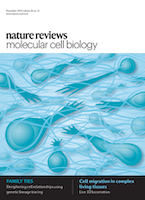
NATURE REVIEWS MOLECULAR CELL BIOLOGY
Pioneering knowledge synthesis in molecular and cellular biology.NATURE REVIEWS MOLECULAR CELL BIOLOGY, published by NATURE PORTFOLIO, stands as a seminal journal in the fields of cell and molecular biology, with a significant impact factor that underscores its influence and reputation within the scientific community. Established in 2000 and continuing its legacy into 2024, this journal delivers comprehensive reviews that synthesize current knowledge and advancements in molecular and cellular processes. Respected for its high-quality articles, it has maintained a prestigious Q1 ranking in both Cell Biology and Molecular Biology categories as of 2023. With an exceptional Scopus ranking, taking the top position in its category, it attracts a readership of prominent researchers, professionals, and students eager to stay abreast of groundbreaking discoveries and methodologies. Although it does not offer Open Access, subscribers benefit from exclusive access to vital insights that foster innovative research approaches and advancements in the life sciences. The journal’s objective is to bridge the gap between research and application, providing indispensable resources to its audience while contributing to the global conversation on molecular and cellular biology.

FREE RADICAL BIOLOGY AND MEDICINE
Unraveling the Impact of Free Radicals on Biological SystemsFREE RADICAL BIOLOGY AND MEDICINE, published by Elsevier Science Inc, is a premier journal dedicated to the field of biochemistry and medical physiology. With an ISSN of 0891-5849 and an E-ISSN of 1873-4596, this journal stands out with its impressive ranking in the 2023 category quartiles: Q1 in Biochemistry and Q1 in Physiology (medical). Specifically, it has achieved a remarkable position of 29th out of 438 in Biochemistry and 8th out of 113 in Physiology, placing it firmly in the 93rd percentile of its field, as per Scopus rankings. Since its inception in 1987, the journal has focused on advancing the understanding of free radicals and their role in biological processes, encompassing a wide range of topics from oxidative stress to therapeutic applications. Although it does not currently offer open access, the journal's rigorous peer-review process and impactful research ensure that it remains a valuable resource for researchers and professionals seeking to explore the intricate relationships between free radicals and health. The journal's headquarters are located at STE 800, 230 Park Ave, New York, NY 10169, reflecting its esteemed place within the scientific community and commitment to high-quality research.
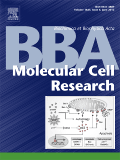
BIOCHIMICA ET BIOPHYSICA ACTA-MOLECULAR CELL RESEARCH
Elevating the standards of molecular cell research.BIOCHIMICA ET BIOPHYSICA ACTA-MOLECULAR CELL RESEARCH is a premier journal published by Elsevier, dedicated to advancing the fields of cell biology and molecular biology. Established in 1982, this influential journal has been at the forefront of scientific research and innovation, currently holding esteemed positions with a Q2 ranking in Cell Biology and a Q1 ranking in Molecular Biology for 2023, reflecting its commitment to high-quality scholarship. With an impressive impact factor, it ranks in the 82nd and 78th percentiles for Molecular Biology and Cell Biology, respectively, amongst its peers. Researchers, professionals, and students will find this journal to be an invaluable resource for exploring the latest discoveries and methodologies in the molecular mechanisms underlying cellular functions. Although it is not an open-access journal, the insights offered in its pages contribute significantly to the scientific community's understanding of cellular and molecular processes, ensuring it remains a vital platform for disseminating cutting-edge research.

Journal of Biophotonics
Bridging Theory and Application in BiophotonicsJournal of Biophotonics is a prestigious academic journal published by WILEY-V C H VERLAG GMBH in Germany, dedicated to advancing the field of biophotonics through high-quality research. With an ISSN of 1864-063X and an E-ISSN of 1864-0648, this journal is recognized for its contributions within diverse categories, including biochemistry, genetics, molecular biology, chemistry, engineering, materials science, and physics, earning a commendable Q2 ranking in several of these fields as of 2023. The journal aims to bridge the gap between theoretical research and practical applications, fostering interdisciplinary collaboration that is critical for innovations in imaging, diagnostics, and therapeutics. Researchers, professionals, and students alike will find the Journal of Biophotonics invaluable for staying informed about the latest developments and breakthroughs in this dynamic field, making it a cornerstone for knowledge dissemination and scholarly discourse from its inception in 2008 and continuing through 2024.